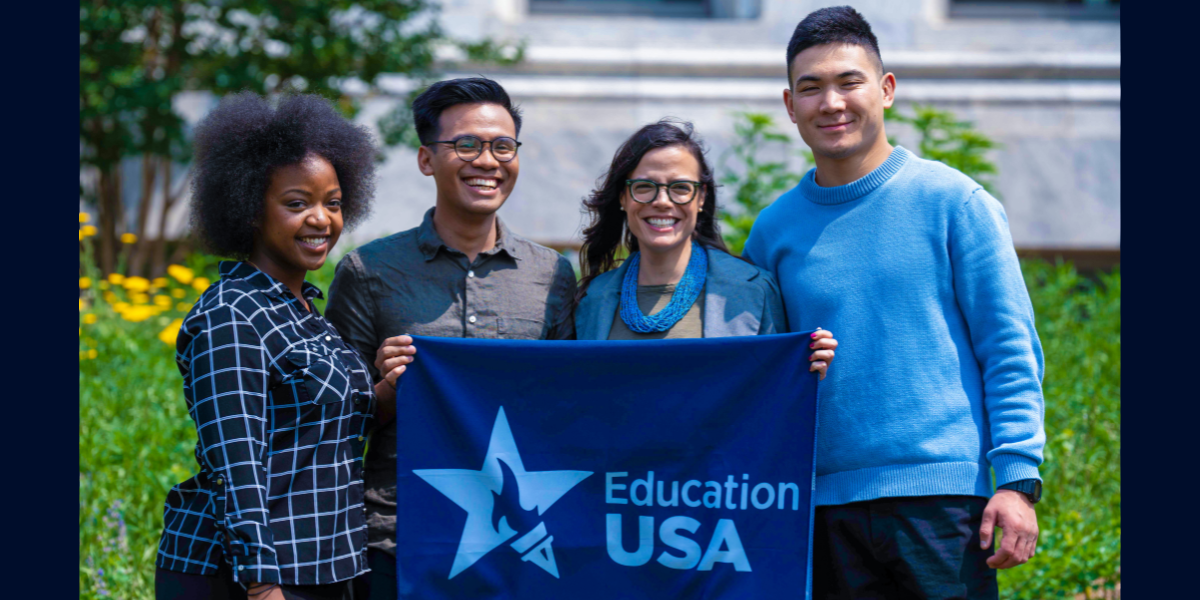
New in 2024, NAFSA is proud to introduce a new series of blog posts, written by NAFSA Global Partners. These institutions represent a broad range of perspectives, develop innovative approaches that enrich the field, and bring a wealth of expertise to the international education community.
The EducationUSA network promotes U.S. higher education across the globe, with Regional Educational Advising Coordinators (REACs) on six continents, more than 550 advisers in 175+ countries, knowledgeable staff at our cooperative partners—the Institute of International Education (IIE), American Councils, and AMIDEAST—and dedicated foreign service officers and civil servants at U.S. embassies and the U.S. Department of State. As we mark the 25th anniversary of the modern iteration of EducationUSA, we reflect on its history and its impact, as we look toward the future.
Building the Network
In the 1920s, approximately 6,500 international students studied in the United States, and educational advising was carried out by a small cadre of U.S. diplomats in a handful of countries around the world. After World War II, the State Department recognized the importance of investing in international students and expanded its efforts to include Fulbright Commissions and regional organizations. By 1953, we saw the number of international students in the United States grow to 34,000. By 1983, when the U.S. Information Agency was overseeing advising efforts, approximately 339,000 international students were studying in the United States. In 1999, EducationUSA was officially launched and branded as a U.S. government network promoting U.S. higher education abroad. By 2015, more than one million international students were enrolled at institutions across the United States. International student mobility had become a multibillion dollar industry and a top U.S. service export. Most importantly, it is a powerful tool in creating a more collaborative, connected, and secure world.
Over the past 25 years, EducationUSA has evolved to meet increasing student demand with expanded access to higher education for underserved youth, emphasis on priority fields of study and workforce development, and the creation of targeted recruitment resources for U.S. institutions, including the EducationUSA Global Guide. Over the past decade, EducationUSA has focused on the importance of U.S. community colleges in responding to global workforce development issues, advancing the “2+2” model for the completion of a four-year degree to students worldwide.
In 2021, the Departments of State and Education released the Joint Statement of Principles in Support of International Education, affirming a coordinated government approach to supporting international student mobility. Since that time, EducationUSA has also doubled-down on creating new resources for higher education institutions by launching Fair Portal, a one-stop shop for fair attendance, and a global marketing campaign to promote critical fields such as natural resource management, artificial intelligence (AI) and emerging technology, business administration, and entrepreneurship. In 2023, the Department of Education updated its international education strategy and the U.S. Department of Commerce included international education for the first time in its National Export Strategy.
Advancing U.S. Higher Education
The United States plays a critical role in equipping students with the skills, knowledge, and networks needed for successful careers in a rapidly changing global economy. The CHIPS and Science Act strengthens research and workforce collaboration between an emerging workforce, higher education, and industry, in critical areas for our future, both domestically and with international partners. Whether it’s collaborating in the STEM fields, negotiating carbon emissions, addressing public health, or building smart cities and pursuing tech innovations—we need to tap the brainpower and energy of talented minds from around the world. President Biden’s National Security Strategy states that, “as we will also continue to create the conditions for our people to thrive, we will also continue to make America the destination of choice for talent around the world.”
As we envision the next 25 years, EducationUSA will continue to promote the quality and diversity of U.S. higher education to all international students and advance the United States as the top destination for international students worldwide. With nearly 4,000 accredited institutions in the United States, there's a study program for everyone—at two-year community colleges, four-year universities, research institutions, and beyond. U.S. colleges and universities host more than 1 million international students each year from 200 countries. International students are welcome here, and EducationUSA is committed to engaging and supporting students that want to #StudyWithUS.
Please join EducationUSA for the next upcoming EducationUSA East Asia & the Pacific (EAP) Regional Forum in Denpasar, Indonesia, from October 16–18. For more information, see the 2024 EducationUSA East Asia & the Pacific Regional Forum website.
For more information, see NAFSA’s editorial guidelines for Global Partner content.
